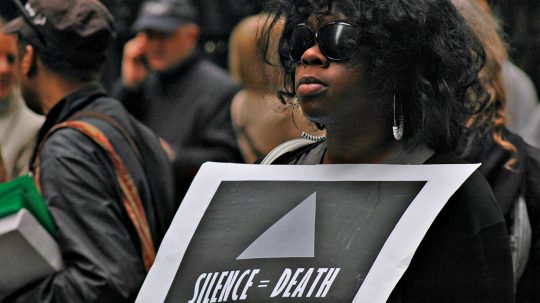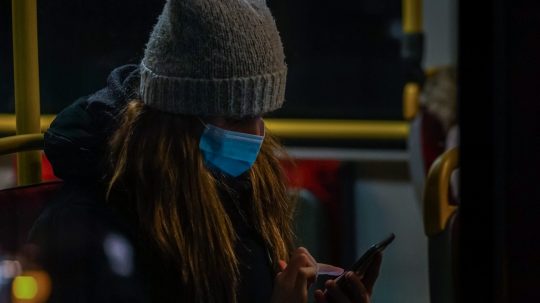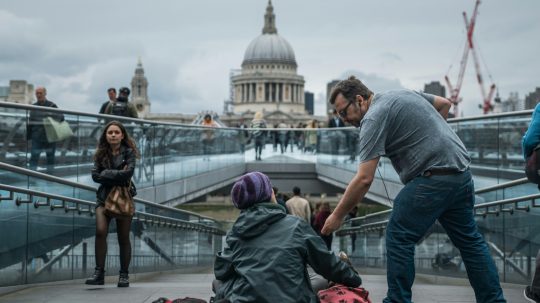Two leading economists put a price on prejudice and stereotypes in the American legal system. What implications does their insightful analysis have on the UK?
What does a waitress, taxi driver, robber and policeman all have in common?
The answer, according to Shadows of Doubt – a book written by American economists Brendan O’Flaherty and Rajiv Sethi – is simple: they stereotype. That much is hardly surprising, but O’Flaherty and Sethi’s analysis of what this means – how it shapes interactions with diners, passengers, victims and suspects alike – is enlightening and utterly convincing. This is a book which every player and policymaker in the criminal justice system should read.
Stereotypes, Crime, and the Pursuit of Justice
The central thesis of Shadows of Doubt is that stereotypes cause interactions to play out in ways which make those very assumptions self-fulfilling.
Take two black teenage males who get into an altercation in Baltimore, an area of Maryland renowned – and famously depicted in The Wire – for its violence, and where killings often go unsolved in the black community.
This level of impunity breeds fear, argue O’Flaherty and Sethi, and makes it more likely that one of the boys will pre-emptively kill the other due to the perceived need to protect himself. In doing so, they further increase the murder rate and sense of fear that led to the trigger being pulled in the first place.
In short, it’s the vicious cycle effect, or ‘fear hypothesis.’ Although these anecdotal descriptions occasionally make your head hurt – the classic chicken or egg dilemma springs to mind – the authors set out sufficient data to demonstrate the complicity of the police, prosecution, and even the judicial system in peddling and succumbing to destructive stereotypes.
Thugs don’t wear mittens
Independent MP and mayoral candidate Rory Stewart recently described an incident in which he met, and was gently ridiculed by, “three sort of minor gangsters” during his campaign to become Prime Minister. In fact, he had actually met three young black men from Brick Lane.
As Labour MP David Lammy was quick to point out, Stewart made a hasty and ignorant assumption about their “gangster”-like credentials based on their dress and, well, swag.
Just because a black man is wearing a hoodie does not make him a "minor gangster." @RoryStewartUK Let's challenge stereotypes, not compound them. pic.twitter.com/m5DUjNS9YH https://t.co/ITKrYPk8qS
— David Lammy (@DavidLammy) October 25, 2019
While Stewart has since apologised, the incident is exactly the sort of misunderstanding that Shadows of Doubt unpacks. It describes the drastic lengths that young black men go to in order to signal to society, and particularly the police, that they don’t represent a threat – everything from wearing mittens and whistling Vivaldi, to the ‘father-son chat’ about how best to signify your innocence if approached by officers.
While this makes for difficult reading, O’Flaherty and Sethi are keen to emphasise the distinction between racist motives on the part of the police, and unconscious bias based on flawed perceptions of criminality and risk. In reality, the two lead to the same harmful conclusion, including the disproportionate and futile ’stop and frisk’ searches of black Americans.
Of course, this problem isn’t confined to America, as the Home Office’s recent statistics demonstrate. In the year to March 2019, there was a 32 per cent increase in the number of stop and searches conducted by police, despite only 15 per cent of stops resulting in an arrest. Shockingly, you are 9.7 times more likely to be stopped and searched in England and Wales if you are black.
Yet more is undoubtedly at stake in the States, which Shadows of Doubt explores by presenting a string of injustices and alarming statistics around the police’s use of lethal force against black Americans. This is a fact that O’Flaherty and Sethi argue is linked to the availability of arms – the fear hypothesis again. Their analysis is dense in parts, but it throws up some surprising results that require further probing by US policymakers and campaigners.
Judge and Jury
The incarceration rate of black Americans is notoriously bad, a situation which O’Flaherty and Sethi link to discriminatory policies rather than crime rates. And while the UK is yet to become the nation of jailers that America represents, analogies can be drawn.
In particular, the prison population of England and Wales has ballooned since 1990, making us the biggest incarcerator in Western Europe. As in the States, it is BAME communities who have borne the brunt of this increase. Black and Asian offenders are respectively 53 and 55 per cent more likely to be sent to prison when sentenced by a judge.
Some of O’Flaherty and Sethi’s analysis is specific to the States, where the composition of a jury is a battleground, manipulated to play to stereotypical views, and where prosecutors are elected, making them answerable to a public affected by racial stigma. Neither circumstance applies to the British legal system.
At times, their analysis is even at odds with the situation we have here. For example, the high stakes at play for black Americans incentivise them to agree to a plea bargain even when innocent. They ‘settle for less in order to avoid more’, as the economists put it.
In comparison, research shows that the distrust that black British suspects have for our judicial system renders them less likely to plead guilty, meaning they face lengthier sentences when convicted.
Still, there are common and convincing conclusions drawn about the impact of stereotypes on judges and juries alike. This raises the question of whether unconscious bias training should be made mandatory, and even whether artificial intelligence can be used to compensate for human prejudice; for example, to help judges better gauge the risk that is posed by a suspect in bail hearings.
An economic solution?
Despite the American lens through which Shadows of Doubt peers, the questions that it raises about how best to improve police, prosecutors, and judges’ interactions with BAME – and particularly black – communities also apply to the UK.
Do we need to explicitly regulate exaggerated perceptions of danger within black communities, including in the media? How can the police build trust to boost witness cooperation and therefore tackle impunity? Should there be a community intermediary who takes down testimonies, only handing these over when multiple witnesses come forward?
Should criminal justice policy be changed to limit incarceration for drug and public order offences – disproportionately levelled against BAME communities – with the evidence being that this has no discernible impact on levels of violent crime?
These are all sensible, laudable ideas O’Flaherty and Sethi put forth, and some echo recommendations set out in David Lammy’s review in 2017. However, one question remains: in today’s highly-charged, emotionally driven political climate, is economic evidence enough to usher in change? It remains to be seen whether it can expose tough-speaking rhetoric on law and order for what it is: rhetoric.






